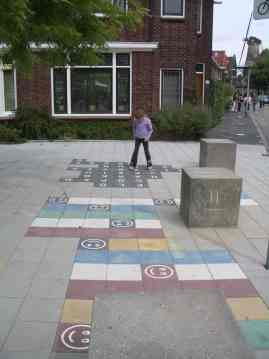
Making the case for more playful and child-friendly places
It is obvious that children’s play experiences and everyday freedoms are hugely shaped by the places where they live. So anyone who cares about these issues should also be concerned about the qualities of neighbourhoods, towns and cities, and about how they are planned, designed and built.
Human habitats are changing fast. In particular, cities are growing and changing faster than ever before – and more and more children are growing up in cities. How should play advocates, and advocates for more child-friendly places, respond to these changes? This post tries to answer that question.
The post brings together some key strands of my thinking over the years on child-friendliness, outcomes and advocacy. It is a very lightly edited version of my response to a discussion on play and the environment that was initiated by the International Play Association (IPA), of which I am a member. You can find the IPA discussion paper here.
The Challenge
IPA is right to address the issue of how children’s opportunities for play are influenced by the environment in which they live. As the IPA paper recognises, urbanization is perhaps the most important environmental factor shaping children’s play experiences. Urbanization is in turn driven and shaped by rapid globalization.
In the face of this shift, government planning processes are often ineffective and/or weak. This failure, combined with a lack of effective citizen engagement, is leading to the spread of unplanned, speculative development that is not child-friendly, not sustainable and counter to the public good. Children’s voices and perspectives on urban environments are all but absent. Moreover, the challenges facing those who wish to influence urban policy are growing.
The IPA discussion paper gives a useful overview of the relationship between children’s right to play and the environment. It rightly sets out the links between good play opportunities and wider health and developmental outcomes. Another strength is the broadness of its scope, in terms of recognising the widely differing contexts and circumstances that limit children’s right to play in different parts of the world.
However, the paper has significant gaps as a position statement. Taking it forward, IPA’s position should be strengthened in three ways to make a stronger case and build an effective platform for action:
- by framing children’s play in the context of child-friendliness;
- through an increased focus on outcomes, with the aim of strengthening the policy case;
- through recognising the lack of influence of the play advocacy sector and hence the need to build alliances with other progressive urban policy advocates whose agendas overlap.
Child-Friendliness
There is a large body of research, policy and practice on the topic of child-friendliness, much of it informed by children’s rights perspectives. This work could do with revisiting and reframing.
Greater recognition is needed of the role of walking, cycling and children’s independent mobility, both as a means to improve their access to play opportunities and as forms of play experience in their own right. Walkability in particular is critical to children’s experience of place as they grow up. Play advocates need to help expand policy-makers’ understanding of this crucial planning concept so that children’s perspectives and experiences of walking are properly taken into account.
For this reason, IPA should reframe its work on children’s play and the environment through the adoption of a fresh conception of child-friendliness which brings together questions of places/provision/experiences and access/mobility.
The Finnish academic Marketta Kyttä has developed a conceptual framework for child-friendliness that provides a sound, helpful basis for play advocacy. It is based on Gibson’s work on affordances and on the role of children’s everyday freedoms – their independent mobility – in actualising affordances. It characterises child-friendliness in terms of – on the one hand – the experiences on offer in a neighbourhood and – on the other – children’s ability to access those experiences. The framework is a valuable starting point for exploring the characteristics of child-friendly environments that are most relevant to play.
Author: Tim Gill reblogged from Rethinking Childhood
Photo Credit: photo from Rethinking Childhood




